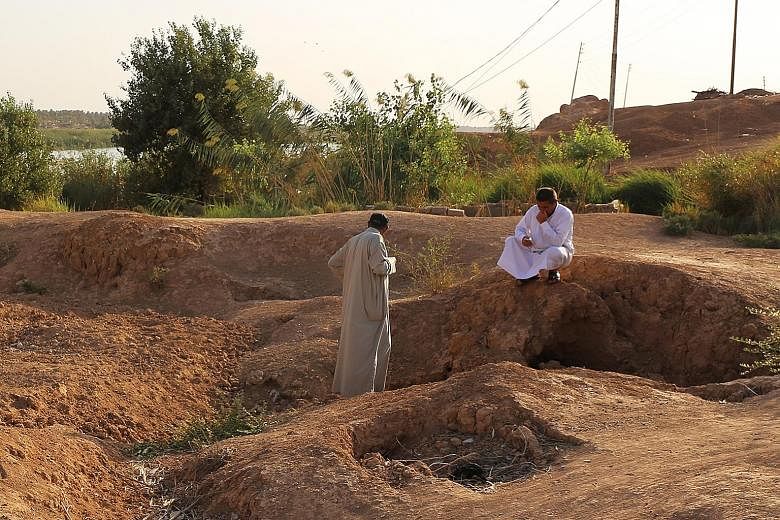DHULUIYAH (Iraq) • The Islamic State in Iraq and Syria (ISIS) once drew recruits from near and far with promises of paradise but now bodies of militants lie in mass graves or at the mercy of wild dogs as its "caliphate" collapses.
Flies buzz around human remains poking through the dusty earth in the Iraqi town of Dhuluiyah, 90km north of Baghdad, at a hastily dug pit containing the bodies of dozens of ISIS fighters killed in 2015.
"They should have ended up in the stomachs of stray dogs," local police officer Mohammed al-Juburi told Agence France-Presse. "We buried them here not out of love but because we wanted to avoid diseases."
Since the launch in 2014 of air strikes in Iraq and Syria against the group, a United States-led coalition says around 80,000 militants have been killed. The number is higher if those targeted by Russian and Syrian strikes are included.
In Dhuluiyah, on the banks of the Tigris river, residents faced a dilemma over what to do with the corpses after local militiamen beat back the extremists.
"We could have thrown them into the water, but we love the river too much to pollute it," said the local policeman, who lost his brother in the fighting. Locals finally decided to dig a mass grave - but they refused to honour the militants with Islamic rites.
The desolate site is in stark contrast to a graveyard a few hundred metres away. There, the "martyrs" who died helping to stop the ISIS advance lie in well-tended tombs adorned with their portraits and shaded by trees.
In the city of Mosul, ISIS' largest urban stronghold in Iraq that it lost in July, the authorities used earth-moving equipment to bury the extremists.
Across the border in Syria, the Syrian Observatory for Human Rights estimates some 50,000 ISIS members have been killed. In the desert plains that the militants once dominated, the bodies of dead fighters are left abandoned, a pro-regime militia head told Agence France-Presse. "The desert dogs are waiting for them," he said. "When fighting ends, the dogs come out from hiding to look for bodies."
AGENCE FRANCE-PRESSE

